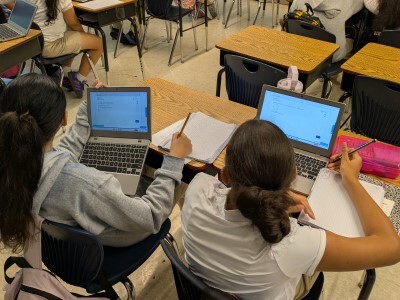The Elementary Years: Prime Time for Blended Learning
Topics
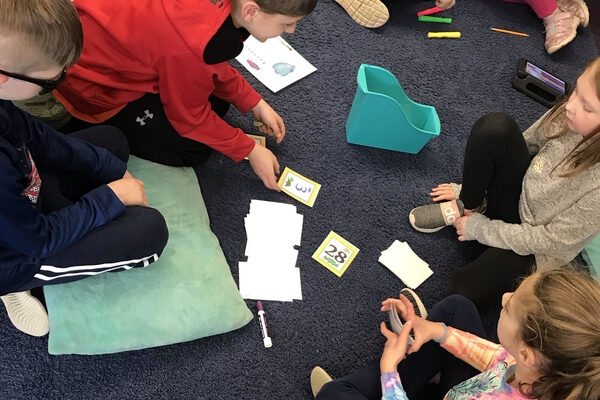
We’ve all had the experience of truly purposeful, authentic learning and know how valuable it is. Educators are taking the best of what we know about learning, student support, effective instruction, and interpersonal skill-building to completely reimagine schools so that students experience that kind of purposeful learning all day, every day.
A 4th grade teaching team works together to adopt blended learning to better meet the needs of their learners, offering classroom strategies for elementary educators.
As educators, we have all experienced moments in which our own mental exhaustion was greater than that of our students. We’ve questioned whether our students worked as hard to learn as we did to teach. Our fourth grade team started questioning the effectiveness of the traditional approach, where, seemingly, students often lacked self-initiation and intrinsic motivation to complete the tasks at hand. We know it to be true that students learn at their own rate and in their own styles, yet our instructional practices were not aligning with this core value. This led to a build up of frustration because we knew we could better meet the needs of our learners. We sought the opportunity to blend our instruction with transformational technology—to create an ideal learning experience for our nine and ten year old students, many of whom have never known life without technology. It was then we realized that to teach without a significant incorporation of technology is simply an injustice to our students in this Information Age. The blended learning approach seemed to offer a solution: a guide to personalized learning, through the implementation of structured technology use in the classroom. After implementing this teaching/learning model, our results were ground-breaking.
After our initial training on the topic, we began building lessons as a team. We designed age-appropriate learning roadmaps that incorporated game-based centers to encourage practice within the self-paced instructional model. We began incorporating videos into our teaching and—hold your breath—each student was learning at their own pace. At the elementary level, we realized the need to build in mini-lessons based on prerequisite knowledge of our students and the misconceptions that we anticipated, but better than that, we found that most mini-lessons generated organically. Yes, you read that right. No preplanning for these. Just the student(s) and teacher doing what we (should) do naturally. Other students became student teachers, leaders, and motivators as we added in pace trackers. We then built in more student choice, and we began to really notice the benefits of this model: the self-paced, intrinsically motivated elementary learner.
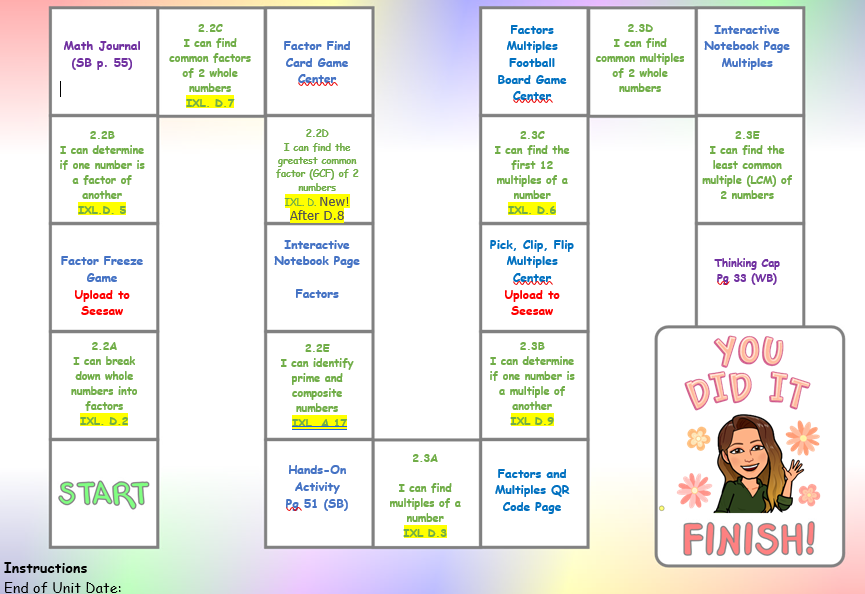
Age-appropriate learning roadmap with game-based centers
What You See when You Walk into Our Elementary Classrooms
When you walk into any of our classrooms you will not see the traditional teacher lecture at the board with students sitting at desks trying to absorb knowledge. You will see learners scattered throughout the room, working toward their own learning goals, while the teacher facilitates the varied styles of learning.
Each learner has been given explicit instruction on how the class should operate during the Blended Learning Block. This explicit beginning instruction gives us the means to facilitate a highly differentiated and individualized learning in the classroom.
In order for this smooth operation, we gave each learner a learning pathway or roadmap filled with “I can” statements as seen below. Learners follow this pathway at their own pace. This becomes their learning plan. Cue technology!
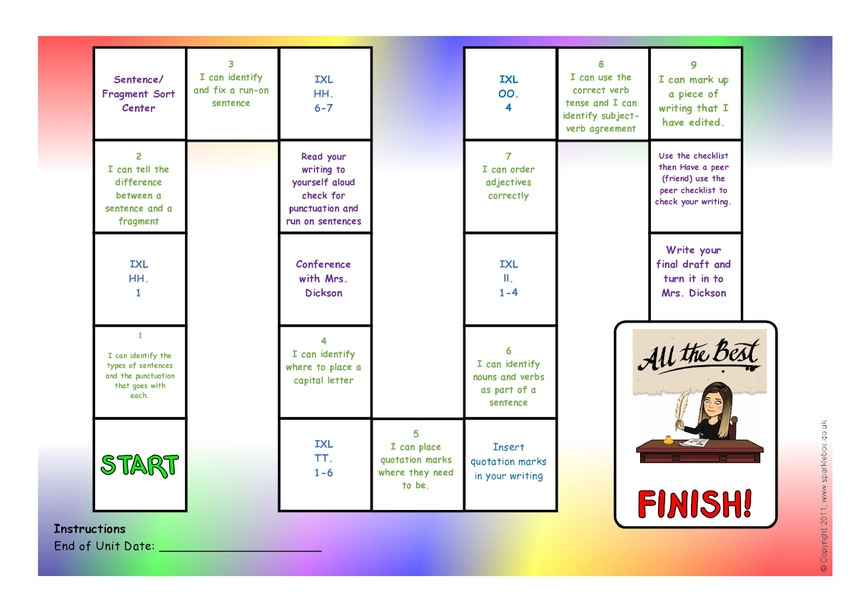
A learning roadmap with "I can" statements
Each lesson is taught via a short teacher-created video. This is where evidence-based teaching practices, such as gradual release, building on prerequisites, and addressing misconceptions are still being put to use! These instructional videos are a means for the teacher to clone him/herself and teach multiple lessons at one time. Since learners are completing lessons on their own, the teacher is free to facilitate learning. You will see us pulling small groups for intervention or enrichment as well as checking in with learners as they practice a given skill. As learners progress through their roadmaps, they complete practice worksheets and mastery checks to prove that they are ready to advance.
 Like many elementary teachers, we love centers and stations like those we find on Teachers Pay Teachers and Pinterest. We worried that there would no longer be a place for these hands-on learning games and practices. We were wrong! All learning stations and games can easily be added to a roadmap to give learners an extra means of skill practice. These learning stations also help keep some learners from moving along the pathway too quickly. We did not have to get rid of practices we already used, appreciated, and felt were essential to skill acquisition. In fact, the continued incorporation of game-based learning is an essential component of blended learning in the elementary classroom.
Like many elementary teachers, we love centers and stations like those we find on Teachers Pay Teachers and Pinterest. We worried that there would no longer be a place for these hands-on learning games and practices. We were wrong! All learning stations and games can easily be added to a roadmap to give learners an extra means of skill practice. These learning stations also help keep some learners from moving along the pathway too quickly. We did not have to get rid of practices we already used, appreciated, and felt were essential to skill acquisition. In fact, the continued incorporation of game-based learning is an essential component of blended learning in the elementary classroom.
Within this personalized structure, is there still a place for whole group instruction? YES! We hold whole group lessons daily, but they are short mini lessons and we only use them when we deem them appropriate. We use a pace tracker to know when a whole group mini lesson is appropriate.
A pace tracker shows each lesson within the unit and where each learner is on his/her learning path. It is displayed during class for all students to view (many students will politely remind you when they need to move ahead a lesson). When we see that a group, generally five or more students, is having the same misconception(s) or is making the same error(s), we know that it is time to reteach that skill to the whole group. This pace tracker also gives us a way to point out learners who are all-stars and can become student-teachers to help others who are struggling.
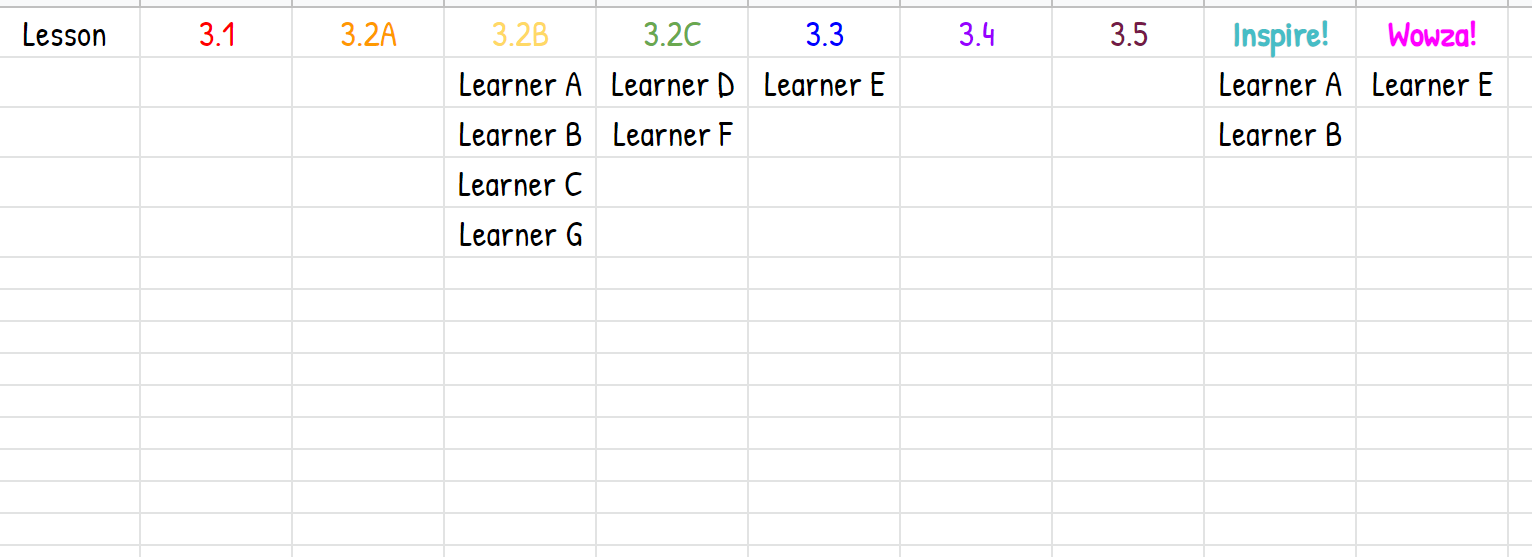
Pace tracker
Self-Pacing: How Do We Know when Learners Are Ready to Move On?
Although learners have a great deal of autonomy in this highly personalized model, the teacher is the one who decides if a skill has been successfully mastered. We determine mastery through the completion of lesson worksheets and mastery checks.
After learners watch the instructional video, they practice the newly acquired skill by completing a worksheet. This practice can be completed with peers in a small group. This worksheet does not have to be reinvented by the teacher. Practice worksheets can come from your curriculum textbook or any resource that you see fit.
The final step is the mastery check. Mastery checks include two to four short questions pertaining to a single lesson (see picture). These must be completed independently by students and then are graded by teachers. Once students successfully complete their mastery checks, they are told to record this on their roadmap and move onto the next lesson! The cycle begins again with a new instructional video.

Mastery check
Are you interested in a differentiated mastery approach? One strategy we use is choice boards. Learners can choose a type of assessment that is suited to their learning style(s). We call these “Prove Its.” For example, learners can demonstrate mastery by creating videos (which can be used to provide instruction to other learners!), posters, and math games. These cultivate an increased level of engagement and provide a more rigorous and individualized method for students to demonstrate their knowledge of the mastered content.
At the end of the day, blended learning has transformed the way we teach and the way in which our students engage with learning both academically and emotionally. Technology is the tool we use to get our students there, but it is also foundational to the future of the job market that these individuals will enter into. Without this change, we were leaving our students in a world in which they were driven by technology, not the drivers themselves. Now, our students skillfully use technology to achieve the goals that they intrinsically set for themselves. How do you put your students in the driver’s seat? If you’re experiencing the same frustrations with the traditional model that we were, blended learning may be a way that you, too, can put your students in the driver's seat.
 Name: Cheyenne Dickson (4th Grade Teacher)
Name: Cheyenne Dickson (4th Grade Teacher)
Challenge: The biggest challenge with this model is the frontloading of the work (making videos, mastery checks, etc.). I do believe this will make it easier in years to come though!
Benefits: There are so many benefits of this model. The biggest benefit that I see is my self-motivated students who want to move ahead in their learning and can take the necessary steps to get there.
Final Thoughts: I strongly feel that blended learning is the best thing I have implemented in my classroom to date. I have seen students grow both in academics and in personal independence.
 Name: Leah Frederick (4th Grade Teacher)
Name: Leah Frederick (4th Grade Teacher)
Challenge: My biggest challenge was the upfront work required to prepare learning pathways, practice problems, and instructional videos. This front-loaded work is well worth the time!
Benefit: Instructional videos have given me a way to clone myself. I can be teaching multiple lessons during one class period to meet the many varied needs of all my learners.
Final Thoughts: As a professional who is pursuing a Master’s of Mass Customized Learning (MCL) and believes in the MCL vision, this blended learning model is the perfect example of how to create personalized learning environments that are bound by the time-based structures of schools.
 Name: Elise Fisher (4th Grade Teacher)
Name: Elise Fisher (4th Grade Teacher)
Challenge: The greatest challenge of blended learning is the upfront time and effort that this model requires. Videoing and “digitizing” take a lot of work that, of course, pays off!
Benefit: In this model, students own their learning. They are encouraged to self-initiate and work at their own pace to complete the tasks at hand.
Final Thoughts: This model has provided me with a meaningful structure for technology use in the classroom. It works! Students and I love it because of the personalization and focus on mastery.
Photo above, courtesy of Leah Frederick: Fourth graders working collaboratively in a hands-on activity.



